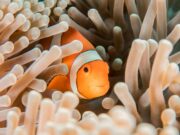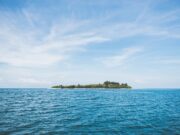The UK has some fabulous diving in her seas, not least on the hundreds of wrecks. There is also beautiful marine life and at times stunning visibility.
You will need a drysuit, or a 7 mm wetsuit with hood and gloves.
When is the best time to dive the UK?
September and October are the warmest months for diving, February and March the coldest. You can dive all year round, using inland sites when the weather is rough.

What marine life is there?
The UK’s marine area covers over 850000 km2: that’s three times more than her land area. The mainland is the largest island in Europe and 9th largest in the world. There at least 6300 other islands in the UK, 189 of them inhabited. British seas regularly host 13 species of marine mammal and even leatherback turtles. When divers first visit UK seas they are often amazed at the diversity and abundance of life (although, in winter, they are sometimes also dismayed by the cold water). There are an estimated 8500 marine species of plant and animal. Two species of seahorse are found in seagrass and seaweed beds in shallow offshore waters.

Where is the best diving in the UK?
There is something for everybody in the UK.
Wreck Diving
According to Historic England, there are 37,000 known wrecks in England alone. But the place to go for wreck diving is Scotland. The real wreck enthusiasts make the trip to Scapa Flow in Orkney. Here there are the remains of a German fleet, scuttled in 1919. The the second world war, British ships were deliberately sunk to prevent enemy access into the bay – the blocking ships. As well as these there are more recent wrecks such as the James Barrie. The wrecks are not just interesting in themselves but are full of sealife.
 Image: Joe Ryan
Image: Joe RyanMore wrecks tempt on the west coast of Scotland in the sound of Mull around Oban. One highlight is the Hispania, thought by some to be the best wreck in Britain. Others include the Thesis, Shuna and Rondo.
Wales also has many wrecks, including the HMS Whirlwind in Pembrokeshire.
Scenic Dives
The sealife around Britain is outstanding. St. Abbs Marine Reserve in the south east of Scotland is home to an incredible diversity of marine life. From the colourful anemones to a feast of fish plus rich kelp forests.

In the south, Lundy Island in Devon is home to one of the largest seal colonies in the UK. Its marine protected area has spectacularly clear waters. Also here are at least 10 wrecks.
 Image: Tim Nicholson
Image: Tim NicholsonSkomer Island off the coast of Pembrokeshire in Wales is a great place to spot dolphins and porpoises. Designated as a Marine Nature Reserve in 1990, here the warm waters from the gulf streaam meet cold water currents from the arctic. Skomer has an underwater wonderland of many different things to see. It is both the northern limit for many warmer water animals like pink sea fans, and near the southern limit for colder water creatures. There are walls dropping to over 50 m, seahorses in seagrass meadows, seals, drift dives, caves

Top photo credit: Tim Nicholson. Janolus cristatus nudibranch.
Further Reading
Diving the UK: British Dive Sites and Operators
Image credits:
- blockship tabarka: Joe Ryan
- seal: Tim Nicholson

















